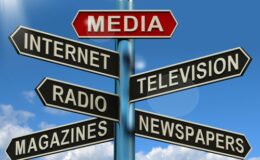Here at our offices in Denver and Austin, Texas, we speak with a little bit of a twang. But every day we are speaking the words used in media buying and planning. It is important for everyone to understand media terminology to improve communication both within the agency as well as with clients. This is especially important to business owners who don’t deal with media every day.
Here are some common media terms and definitions.
| Demographic: | Specific groups within the universe that one is targeting, usually broken down by age and gender but could also include income, buying characteristic, lifestyle etc. |
| Rating: | A percent of the population or universe exposed to an advertising medium. |
| Rating Point: | A value equal to one percent (one rating) of a population or universe. |
| GRP/TRP: | The sum of all the ratings delivered by a given list of media properties. Specifically, they mean gross rating point and target rating point. They essentially mean the same thing. |
| Impression: | This is the number of contacts (eyeballs) that are exposed to a message. It does include duplication and is usually expressed in thousands. |
| Reach: | The percent of different people or households exposed to a specific media schedule within a given period of time, expressed as a percentage. It is unduplicated and can be used to refer to a single media property or a media schedule. |
| Frequency: | The average number of times a target audience or household is reached by a media schedule. |
| CPM: | Cost per thousand. It is the cost to expose 1,000 people or households to your advertising. |
| CPP: | Cost per point. It represents the cost of purchasing one rating point. |
| Pre-emption: | The substitution of one advertiser’s ad by another advertiser paying a higher rate for the same time and program. |
| Make-good: | Comparable unit or units of advertising offered when the original spot ordered either did not run or ran incorrectly. |
| Net Cost: | Advertising rates that do not include agency commission. |
| Gross Cost: | Advertising rates that include agency commission. |
| Share: | A percentage of the audience tuned to a particular program at a given time. |
| Billboard: | Typically, an outdoor advertising display unit. It also can be a :05 or :10 announcement indicating sponsorship of a program or feature such as traffic or news. |
| Poster Panel: | A standard outdoor advertising display unit. |
| Showing: | A group of outdoor boards, which provide certain percentage coverage of a market, usually purchased as #25 showing or #50 showing. |
| Avails: | Availability – it is the unsold units of time available to sell to advertisers. It can also be a station’s submission of programs, rates and ratings for planning and buying. |
| Daypart: | One of the time segments the day is divided by for broadcast media. It is determined by programming. |
| Drive Time: | Dayparts used in radio that have the highest amount of listeners in cars, usually while people are driving to and from work. It is generally from M-F 6a-10a and M-F 3p-7p. |
| ROS: | Run of Schedule – where specific times and programs have not been requested by the advertiser. |
| DMA: | Designated Market Area – Nielsen’s term for geographical areas made up of exclusive counties based on which home market stations receive the predominate share of viewing. |
| Circulation: | Total number of copies of a publication distributed at a specific time. |
| Column Inch: | A unit of newspaper space that is one column wide and one inch deep. |
| P4C: | Abbreviation for page 4-color ad. |
| PBW: | Abbreviation for page black & white ad. |
| DEC: | Daily Effective Circulation – it is the average number of persons, in cars or other vehicles, passing and potentially exposed to an advertising display for either 12, 18 or 24 hours. |
| EOIs: | Eyes On Impressions – the average number of persons who are likely to notice an ad on an out of home display for either 12 hours (un-illuminated) or 18 hours (illuminated). Unless specified as In-Market, EOIs include all persons who notice the unit, regardless of the origin of their trips. EOIs are reported in weekly increments. |
Although these definitions account for some of the everyday terms, we encourage you to continue your quest for media knowledge and know-how.
Please contact us if you’d like more information on radio planning and buying.







